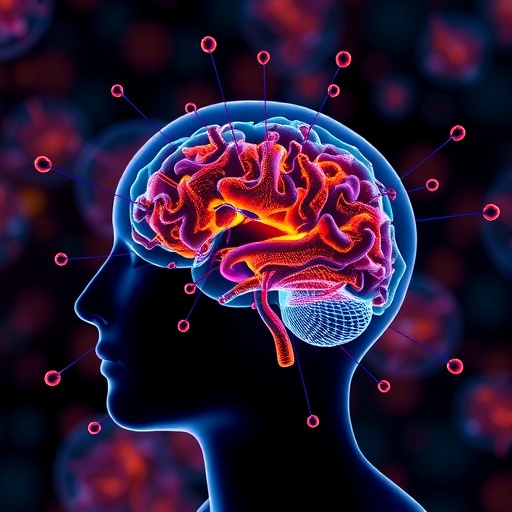In an enlightening new study published in BMC Psychiatry, researchers have uncovered critical insights into the biochemical underpinnings of chronic schizophrenia, focusing particularly on the interplay between oxidative stress and niacin sensitivity. This investigation shines a spotlight on the oxidative and inflammatory pathways that may influence the pathophysiology of this complex mental disorder, suggesting new avenues for both understanding disease mechanisms and exploring potential biomarkers useful for diagnosis or treatment monitoring.
Schizophrenia, a chronic and debilitating psychiatric condition, has long been associated with dysregulation in oxidative stress (OS) and inflammatory processes. These biological disturbances are believed to contribute significantly to disease progression and symptom severity. The current study specifically aimed to dissect the relationship between markers of oxidative stress and the responsiveness to niacin—a compound known to provoke a characteristic skin flare response mediated by vasodilation and immune interactions—in male patients suffering from chronic schizophrenia.
The research cohort consisted of 80 male patients diagnosed with chronic schizophrenia and a control group of 40 healthy, age-matched individuals. Such a design allowed the scientists to directly compare biological and functional parameters across both populations and thereby identify specific aberrations unique to the patient group. Blood samples drawn from all participants underwent rigorous biochemical analyses to measure several key indicators: nitric oxide (NO), total nitric oxide synthase (TNOS), the inducible (iNOS) and constitutive (cNOS) isoforms of NOS, as well as total antioxidant capacity (TAC) and vitamin E (VE) levels. These indicators serve as a proxy for the oxidative state and antioxidant defenses within the body.
Complementing biochemical assays, the study employed a functional test to assess niacin sensitivity through the erythema response elicited by topical niacin application. This skin reaction, which is characteristically diminished in schizophrenia patients, acts as a measurable proxy for peripheral immune and vascular responsiveness potentially linked to underlying oxidative and inflammatory status. Clinical severity of symptoms was rigorously quantified using the Positive and Negative Syndrome Scale (PANSS), a standardized tool widely used in psychiatric research.
The results highlighted a significant reduction in the activity of TNOS, iNOS, cNOS, TAC, and VE in the schizophrenia cohort when compared to healthy controls, underscoring a marked imbalance in redox homeostasis. This imbalance is emblematic of enhanced oxidative stress, reflecting either excessive generation of reactive oxygen species or insufficient antioxidant defense mechanisms. Such changes could critically impair cellular function and promote neuroinflammation, contributing to the complex symptomatology observed in chronic schizophrenia.
Importantly, the study found a clear link between reduced skin niacin sensitivity and lowered antioxidant capacity. Specifically, diminished erythema responses were correlated with decreased TAC activity and plasma vitamin E levels, suggesting that impaired vascular or immune function in these patients may be driven by insufficient antioxidative protection. This finding bolsters the concept that peripheral niacin response could serve as a non-invasive biomarker reflecting underlying oxidative stress status.
Intriguingly, plasma nitric oxide concentrations exhibited a positive correlation with the severity of positive symptoms measured by PANSS, including hallucinations and delusions. This suggests that NO, a molecule classically involved in vasodilation and immune signaling, may play a contributory role in symptom exacerbation, potentially acting as a mediator of neuroinflammatory processes within the central nervous system.
Regression analyses in this study further identified total antioxidant capacity as a significant protective factor against impaired niacin response, with an odds ratio indicating that higher TAC levels markedly reduce the likelihood of diminished skin reaction. This finding reinforces the importance of redox balance in maintaining normal vascular and immune function within schizophrenia pathology.
Collectively, these insights point toward a compelling mechanistic narrative: chronic schizophrenia features a disrupted redox equilibrium characterized by antioxidant deficits, heightened oxidative stress, and altered nitric oxide metabolism. This disequilibrium correlates with both functional impairment—evidenced by reduced niacin sensitivity—and clinical symptom severity. Such an integrative understanding highlights oxidative stress as a pivotal target for future therapeutic interventions.
The study’s authors emphasize that these observations warrant further longitudinal research to untangle the causal relationships between redox disturbances, niacin sensitivity, and psychiatric manifestations. Understanding whether antioxidant supplementation or strategies targeting nitric oxide pathways may alleviate symptoms or modify disease progression remains an exciting, yet open, clinical question.
This research not only provides critical biochemical and functional evidence linking oxidative stress and immune responsiveness in schizophrenia but also proposes simple, measurable peripheral biomarkers that could enhance clinical assessment. Such advances could catalyze the development of personalized medicine approaches, tailoring interventions based on an individual’s oxidative and inflammatory profile.
As the quest to decode schizophrenia’s complex etiopathology continues, findings such as these underscore the profound influence of systemic biochemical imbalances on brain function and symptom expression. Integrating biochemical assays with functional testing may open new frontiers in psychiatric diagnostics and therapeutics.
In summary, this study elaborates on the interwoven roles of oxidative stress, antioxidant defense deficits, and niacin sensitivity in shaping the clinical landscape of chronic schizophrenia. It calls upon the scientific community to delve deeper into redox biology within neuropsychiatric disorders, potentially unlocking new strategies to improve patient outcomes.
Subject of Research: The correlation between oxidative stress markers and niacin sensitivity in male patients with chronic schizophrenia.
Article Title: Correlations of oxidative stress markers with niacin sensitivity in male patients with chronic schizophrenia
Article References:
Yang, M., Tian, Q., Yuan, X. et al. Correlations of oxidative stress markers with niacin sensitivity in male patients with chronic schizophrenia. BMC Psychiatry 25, 1092 (2025). https://doi.org/10.1186/s12888-025-07560-2
Image Credits: AI Generated
DOI: 17 November 2025
Keywords: Schizophrenia, oxidative stress, niacin sensitivity, nitric oxide synthase, total antioxidant capacity, vitamin E, chronic mental illness, biomarkers, neuroinflammation




